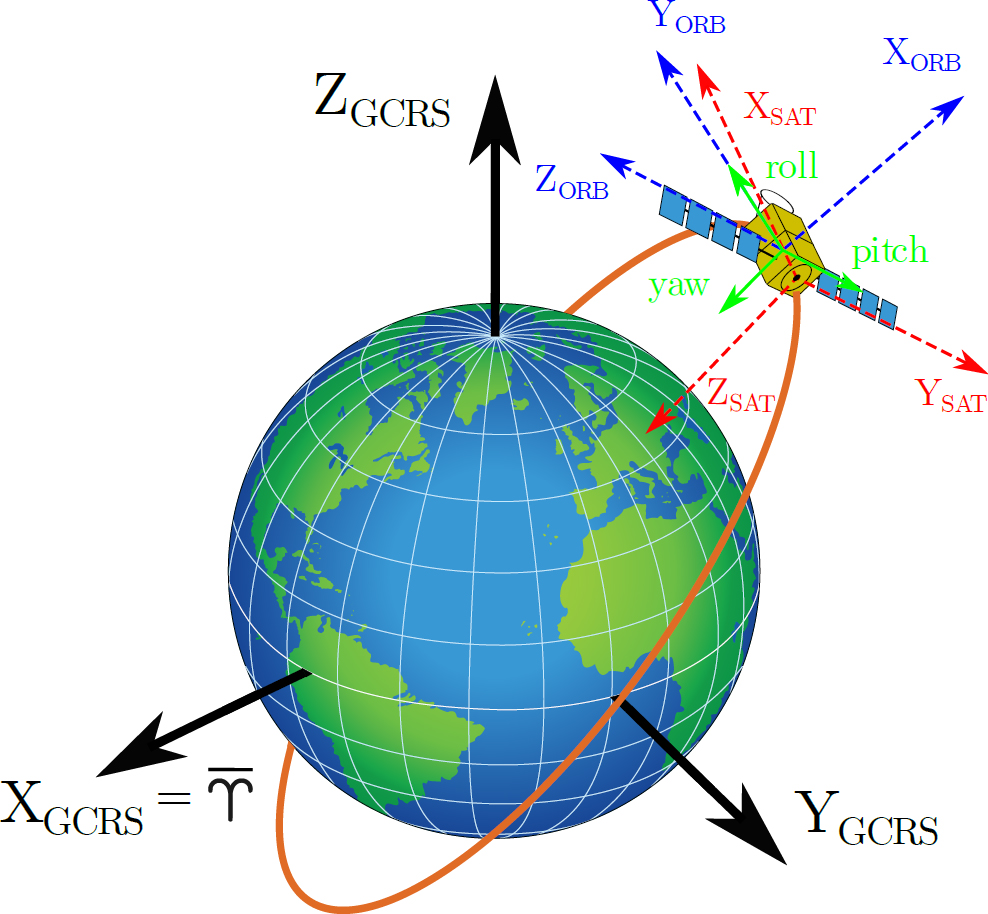Observation-based attitude model improves the orbits of Jason altimetry satellites

Low Earth orbiting satellites are strongly influenced by perturbing accelerations. For the precise orbit determination (POD) of a non-spherical satellite, accurate modelling of the satellite-body attitude and solar panel orientation is important as the acceleration is directly related to the satellite’s effective cross-sectional area. Moreover, the positions of tracking instruments mounted on the satellite are affected by its attitude.
The altimeter satellites Jason-1/-2/-3 have been providing continuous precise monitoring data of the sea level since December 2001. They have a complex shape, comprising the main spacecraft body on which solar panels and numerous measurement and positioning instruments are mounted. The attitude in space is commonly modelled using a so-called nominal yaw steering model. Scientists of DGFI-TUM have now implemented an observation-based algorithm in which extensively preprocessed quaternions of the satellite body orientation (measured by star tracking cameras) and rotation angles of the solar arrays are used to derive improved attitude information. Processing steps comprise a detailed data analysis, outlier elimination, temporal resampling of the observation data and the optimal interpolation of missing values. The procedure is described in the recent publication Observation-based attitude realization for accurate Jason satellite orbits and its impact on geodetic and altimetry results (Remote Sensing, 2020, doi: 10.3390/rs12040682, [PDF])
The study investigates the benefit of using preprocessed observation-based attitude in contrast to a nominal yaw steering model for the POD of Jason satellites by Satellite Laser Ranging (SLR) over more than two decades. Results show that the new algorithm improves the root mean square (RMS) of SLR observation residuals by 5.9%, 8.3% and 4.5% for Jason-1, Jason-2 and Jason-3, respectively, compared to the nominal attitude realization. The analysis of single-satellite crossover differences revealed a reduction of the mean of absolute differences by 6%, 15%, and 16%. Furthermore, it could be shown that artificial (non-geophysical) signals in station coordinate time series due to orbit modelling deficiencies are significantly reduced. The observation-based attitude data of Jason-1/-2/-3 can be made available on request.
Arcisstraße 21
80333 München